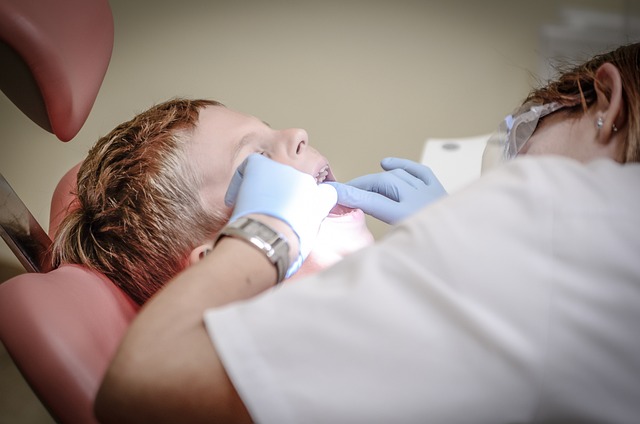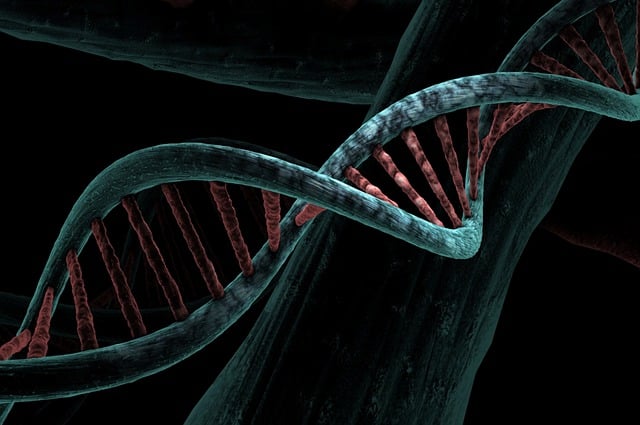Have you recently gotten veneers and wondering what foods to avoid? Discover the food restrictions you need to know to maintain your stunning smile!
1. Understanding Veneers: Advantages and Limits
Veneers are a popular cosmetic dental treatment that can significantly enhance the appearance of your smile. Designed to cover the front surface of teeth, veneers are thin shells made from either porcelain or resin composite material. They are custom-made to match the color, shape, and size of your natural teeth, providing a natural-looking solution for a variety of dental concerns.
One of the main advantages of veneers is their ability to improve the color and shape of teeth. Whether your teeth are stained, discolored, or irregularly shaped, veneers can help you achieve a brighter, more symmetrical smile. Since they are custom-fabricated, they can be tailored to match the exact color you desire, resulting in a seamless blend with your existing teeth. Additionally, veneers can be used to close small gaps between teeth, correct minor misalignment, and even fix the appearance of chipped or worn teeth.
- Enhances the color, shape, and size of teeth
- Custom-made to match your natural teeth
- Provides a natural-looking solution
- Improves the appearance of stained or discolored teeth
- Closes small gaps and corrects minor misalignment
- Repairs the appearance of chipped or worn teeth
Although veneers offer numerous advantages, it’s important to understand their limitations. Veneers may not be suitable if you have severe tooth decay, gum disease, or weakened teeth. Additionally, once the natural tooth structure is altered to accommodate the veneers, the process is irreversible.
- May not be suitable for severe tooth decay or gum disease
- Not recommended for weakened teeth
- Alteration of natural tooth structure is irreversible
Overall, veneers provide a versatile and effective solution to enhance your smile. Consulting with a qualified dentist can help determine if veneers are the right choice for you, considering your specific dental conditions and needs.
2. Protecting the Beauty: Foods to Avoid with Veneers
Once you have invested in veneers to enhance your smile, it is important to take precautions to protect their beauty and longevity. By avoiding certain foods, you can ensure that your veneers remain intact and look their best for years to come. Here are some foods to steer clear of:
- Hard Foods: Crunching down on hard foods like ice, hard candies, or nuts can put unnecessary stress on your veneers, leading to cracks or breakages. Opt for softer alternatives whenever possible.
- Staining Beverages: Beware of beverages that can stain your natural teeth, as they can also discolor your veneers. Coffee, tea, red wine, and dark sodas are known culprits. Consider using a straw when consuming these drinks to minimize direct contact with your veneers.
- Acidic Foods: Acidic foods like lemons, oranges, tomato sauces, or vinegar can erode the adhesive bond between your veneers and teeth over time, causing them to loosen or even detach. Minimize your consumption of acidic foods to preserve the integrity of your veneers.
- Biting and Tearing: Using your veneers to bite or tear into hard objects like plastic packaging, fingernails, or pen caps can damage them. Always remember to use proper tools or scissors to avoid unnecessary pressure on your veneers.
- Chewy and Sticky Foods: Sticky candies, chewing gums, or caramel can adhere to your veneers, making them susceptible to damage or displacement. Opt for orthodontic-friendly alternatives that won’t compromise the integrity of your veneers.
- Biting into Non-Food Items: Avoid using your veneers as tools to open bottles, tear off clothing tags, or hold objects. Such actions can chip, crack, or dislodge your veneers.
By being mindful of these foods and habits, you can protect the beauty of your veneers and enjoy a dazzling smile that lasts a lifetime.
3. Beware the Crunch: Hard Foods that Can Damage Veneers
Veneers are a popular choice for achieving a perfect smile, but it’s important to be mindful of the foods you eat to ensure their longevity. While veneers are a durable and resistant option, certain hard foods can cause damage or even lead to veneer breakage. To protect your investment and keep your veneers looking their best, here are some hard foods you should be cautious of:
- Ice: Chewing on ice cubes may seem harmless, but the hard texture can put excessive pressure on your veneers and potentially cause them to crack or chip. Avoid using your teeth as a tool for crunching ice.
- Hard candies and nuts: Biting down on hard candies or nuts can exert considerable force on your veneers, increasing the risk of damage. It’s best to opt for softer alternatives to protect your beautiful smile.
- Crusty bread and bagels: While these foods may be lip-smackingly delicious, they can be quite tough to chew. The repetitive biting and tearing motion can gradually weaken your veneers, so it’s advisable to consume them in moderation.
Remember, even though veneers are designed to withstand normal biting and chewing, it’s a good idea to be mindful of the foods you consume to prevent any potential damage. By avoiding these hard foods and adopting a dental-friendly diet, you can help preserve the integrity of your veneers and keep your smile dazzling for years to come.
4. Staining Risks: Foods and Drinks that Discolor Veneers
Veneers are a fantastic way to enhance and transform your smile, but it’s important to be aware of certain foods and drinks that can potentially stain or discolor them. While veneers are highly resistant to staining, they are not completely immune. By avoiding or minimizing the consumption of the following items, you can help preserve the natural beauty of your veneers for years to come:
- Coffee and Tea: These popular beverages contain tannins, which can gradually darken the shade of your veneers over time. Consider switching to lighter options or using a straw to minimize contact with your veneers.
- Red Wine: The rich color and acidic nature of red wine make it a major culprit for veneer stains. Limiting your consumption or rinsing your mouth with water after enjoying a glass can help minimize the risk.
- Berries and Dark Fruits: While delicious and nutritious, fruits like blueberries, blackberries, and cherries can stain veneers due to their deep pigments. Enjoy them in moderation and remember to rinse or brush after consumption.
Remember that good oral hygiene habits, such as brushing and flossing regularly, can also help prevent staining. If you do find your veneers becoming dull or discolored over time, consult with your dentist to discuss potential professional cleaning or whitening options. By being conscious of the staining risks associated with certain foods and drinks, you can maintain the vibrant appearance of your veneers and keep smiling confidently.
5. Acidic Culprits: Foods that Can Erode Veneer Surfaces
When it comes to protecting veneer surfaces, it’s important to be aware of the acidic culprits that can cause erosion. These foods may seem harmless, but their acidic properties can gradually wear down the veneer finish, compromising its durability and aesthetic appeal. By avoiding or limiting the intake of these acidic foods, you can help maintain the longevity and beauty of your veneer surfaces.
Here are some common acidic offenders that you should be mindful of:
- Citrus fruits: Oranges, lemons, and grapefruits are known for their high vitamin C content, but their acidic nature can be harmful to veneer surfaces over time.
- Vinegar-based products: From salad dressings to pickles, vinegar is a staple in many cuisines. However, the acetic acid present in vinegar can gradually weaken the veneer finish if not properly cleaned up.
- Tomatoes and tomato-based products: Whether consumed as raw tomatoes or in sauces, ketchup, or salsa, tomatoes have a high acid content that can erode veneer surfaces if left in prolonged contact.
Protecting your veneer surfaces involves being mindful of the acidic nature of certain foods and taking steps to minimize their impact. By adopting smart cleaning practices and being cautious with potentially damaging substances, you can enjoy the beauty of your veneer surfaces for years to come.
6. Temperature Sensitivity: Avoiding Extreme Hot or Cold Food and Drinks
When it comes to temperature sensitivity, it is important to avoid consuming food and drinks that are either extremely hot or cold. This is because extreme temperatures can have adverse effects on our oral health and overall well-being.
Here are some key points to keep in mind:
- Hot foods and drinks: Consuming extremely hot foods and beverages can lead to burns in the mouth and throat, causing discomfort and potential tissue damage. It is recommended to allow them to cool down before consuming.
- Cold foods and drinks: Similar to hot items, consuming extremely cold foods and beverages can also cause discomfort and sensitivity, particularly for those with sensitive teeth. Allowing cold items to reach a more moderate temperature before consuming can help minimize potential issues.
- Sensitivity considerations: If you already suffer from tooth sensitivity, extreme temperatures can exacerbate the problem. It may be advisable to avoid or limit both extremely hot and cold foods and drinks to prevent discomfort.
- Impact on dental restorations: Extreme temperatures can also affect dental restorations like fillings, crowns, or veneers. Rapid temperature changes can cause them to expand or contract, potentially resulting in fractures or loosening. It is best to avoid exposing dental restorations to extreme hot or cold temperatures whenever possible.
By being mindful of the temperature of our food and drinks, we can protect our oral health, prevent potential injuries, and maintain the longevity of our dental restorations.
7. Sticky Situations: Foods that Can Dislodge Veneers
When you have veneers, it’s important to be mindful of certain sticky situations that can potentially dislodge them. Here are some foods that you should be cautious about:
- Caramels and Taffy: These chewy candies can put excessive force on your veneers, leading to their loosening or displacement. It’s best to avoid them altogether.
- Hard and Crunchy Snacks: Foods like popcorn, pretzels, and hard cookies can also pose a risk to your veneers. The brittle nature of these snacks can cause your veneers to crack or break, so it’s wise to consume them with caution.
- Sticky Fruits: Certain fruits such as dried apricots, pineapple, and figs, tend to be sticky and can potentially pull off your veneers. Eating these fruits in moderation and cutting them into smaller pieces can help avoid any mishaps.
It’s crucial to remember that maintaining good oral hygiene and having regular dental check-ups can prevent any potential issues with your veneers. If you accidentally dislodge or damage a veneer, make sure to consult your dentist as soon as possible for proper evaluation and necessary repairs. By being mindful of the foods you eat, you can ensure the longevity and stability of your veneers, keeping your smile radiant and beautiful.
8. Seafood Cautions: Beware of Shellfish with Veneers
When it comes to enjoying seafood, shellfish is a popular choice for many. However, it’s important to be aware of certain cautions, especially if you have veneers. Some types of shellfish, like mussels and clams, can be particularly tricky for those with dental veneers. Here’s what you need to know to take care of your dental health:
1. Be cautious of biting down too hard: Veneers are thin porcelain covers that improve the appearance of your teeth. While they are durable, they can be vulnerable to damage if you accidentally bite down on a shell fragment. It’s best to take smaller bites and chew carefully to minimize the risk.
2. Avoid crustaceans with sharp shells: Crabs and lobsters have hard, sharp shells that can potentially crack or damage your veneers. If you’re indulging in these delicacies, consider opting for crab meat or lobster tails instead to avoid any mishaps.
9. Crunchy Snack Alternatives: Optimal Choices for a Healthy Smile
When it comes to satisfying your cravings for crunchy snacks, it’s important to choose options that not only taste great but also promote a healthy smile. Fortunately, there are plenty of alternatives to traditional unhealthy snacks that can help protect your teeth and gums. Here are some optimal choices that you can enjoy guilt-free:
- Carrot Sticks: Crunchy and packed with vitamins, carrot sticks are not only a delicious snack but also promote good oral health. They help stimulate saliva production, which aids in neutralizing harmful bacteria in the mouth.
- Celery: This low-calorie and fiber-rich vegetable is a fantastic option for a crunchy snack. Chewing celery helps clean teeth and massage gums, promoting a healthy smile. Additionally, it contains vitamin C, which strengthens gums and helps prevent gum disease.
- Almonds: These tasty nuts are not only a great source of healthy fats and protein, but they also provide a satisfying crunch. Almonds strengthen teeth with their high calcium content and can even help to reduce the risk of tooth decay.
- Cucumber Slices: With their high water content, cucumbers are hydrating and refreshing. They also promote saliva production, which helps wash away bacteria and neutralize acids in the mouth, protecting your teeth from damage.
By opting for these crunchy snack alternatives, you can satisfy your cravings while also maintaining a healthy smile. Remember, making small changes to your snack choices can have a big impact on your dental health over time!
10. Mastering Proper Dietary Habits with Veneers: Tips for Long-Lasting Results
When it comes to maintaining the longevity of your veneers, incorporating proper dietary habits is crucial. Not only will this ensure your veneers stay in pristine condition, but it will also contribute to your overall oral health. By following these expert tips, you can enjoy the benefits of your veneers for years to come:
- Avoid excessive consumption of hard foods, such as ice, nuts, or hard candy, as they can potentially chip or crack your veneers.
- Steer clear of highly pigmented foods and beverages, like coffee, red wine, or soy sauce, as they can stain your veneers over time. If you do indulge, be sure to rinse your mouth with water afterwards.
- Refrain from biting on non-food objects like pencils or pens, as this habit can put unnecessary pressure on your veneers and weaken them.
- Don’t forget to maintain a good oral hygiene routine. Brush your teeth at least twice a day and floss daily to keep your veneers and natural teeth clean and free of plaque buildup.
By following these dietary habits, you can maximize the lifespan of your veneers and enjoy a beautiful, confident smile for years to come. Remember, diligent care and attention to what you eat will help you maintain the best possible results.
In conclusion, while veneers can enhance your smile, certain foods should be avoided to maintain their longevity. Steer clear of biting hard foods, chewing ice, and consuming sticky candies. Opt for softer foods and practice good oral hygiene. Remember, proper care will help your veneers last for years to come!





